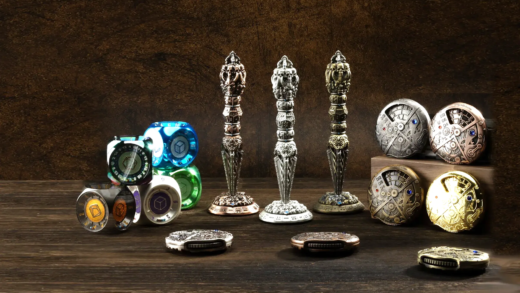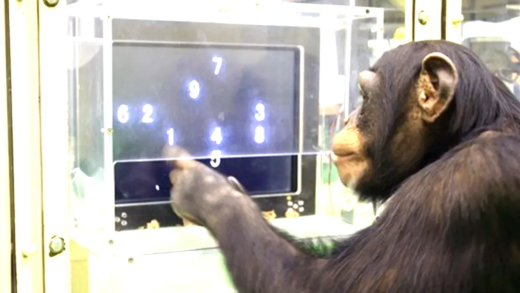This article explores the future of luxury cars by 2030, highlighting key trends in features, technology, and sustainability. Key points include advancements in connectivity, the role of AI, and the importance of unique design and brand differentiation.
Defining Luxury: Features of 2030 Luxury Cars
Luxury car features in 2030 will redefine what we understand as premium vehicles. Gone are the days when luxury was solely about brand prestige; now it’s about technology, sustainability, and personalized experiences. By 2030, we can expect luxury cars to include:
- Advanced Connectivity: Seamless integration with smartphones and smart home devices will be standard.
- Eco-Friendly Materials: Sustainable materials will dominate, reflecting a commitment to the environment.
- Personalization: Customizable interiors and settings that adapt to individual preferences will enhance the driving experience.
- Enhanced Safety Features: Cutting-edge safety technology will be a must-have, ensuring peace of mind on the road.
- Autonomous Driving Capabilities: Many luxury vehicles will be equipped with sophisticated self-driving features, providing effortless travel.
These characteristics will elevate the definition of luxury, focusing on comfort and high-tech integration. The future luxury car will not just be about getting from point A to point B, but about enjoying the journey.
Digital Technology in Driving: Enhancements Ahead
The driving experience in luxury cars will be heavily influenced by digital technology by 2030. Innovations will transform how we interact with our vehicles. Key enhancements will include:
- Intuitive Interfaces: Touchscreen controls and voice commands will simplify interactions, making driving safer and more enjoyable.
- Real-Time Data: Access to real-time traffic updates and navigation assistance will be standard, optimizing routes and travel times.
- Smart Assistance: AI-driven systems will help with driving tasks, from parking to lane changes, enhancing overall safety.
This digital shift promises to make driving more enjoyable and less stressful. Imagine a world where your car can anticipate your needs before you even voice them!
AI’s Role in Luxury Vehicles: What to Expect
Artificial intelligence will play a pivotal role in shaping luxury vehicles by 2030. The integration of AI will enhance various aspects of driving, including:
- Personalized Experiences: AI will learn driver preferences, adjusting seating, climate, and entertainment options automatically.
- Predictive Maintenance: AI systems will monitor vehicle health and predict maintenance needs, preventing breakdowns before they happen.
- Advanced Safety Systems: AI will enhance safety features, detecting potential hazards and assisting drivers in avoiding accidents.
The role of AI in luxury cars will not just be about convenience; it will revolutionize safety and driving dynamics, making every journey smoother and more enjoyable.
Eco-Friendly Luxury: Sustainability in the Automotive World
Sustainability in luxury vehicles will take center stage by 2030. The demand for eco-friendly luxury cars will drive manufacturers to adopt greener practices. Key aspects of sustainability in luxury cars will include:
- Electric Powertrains: Many luxury brands will transition to fully electric or hybrid powertrains, reducing carbon footprints significantly.
- Sustainable Materials: Manufacturers will increasingly use recycled and bio-based materials, such as vegan leather and recycled metals, in car interiors.
- Energy Efficiency: Enhanced aerodynamics and lightweight designs will improve energy efficiency, allowing luxury vehicles to travel further on less energy.
- Green Manufacturing Processes: Factories will adopt eco-friendly practices, including renewable energy sources and waste reduction strategies.
By focusing on sustainability, luxury car brands will not only appeal to environmentally conscious consumers but also redefine luxury as a concept that embraces responsibility and innovation.
Safety First: Advancements in Car Safety Technology
Advancements in car safety technology will revolutionize luxury vehicles by 2030. The expectation is that safety will become an even greater priority, with features including:
- Enhanced Driver Assistance Systems: Future luxury cars will come equipped with advanced systems that assist with lane-keeping, adaptive cruise control, and automated emergency braking.
- 360-Degree Cameras: Surround-view camera systems will provide comprehensive visibility, helping drivers navigate complex environments.
- Smart Collision Avoidance: AI will analyze driving patterns and external conditions to proactively avoid potential accidents.
- Real-Time Safety Alerts: Connectivity features will allow cars to communicate with each other and infrastructure, offering real-time safety alerts to drivers.
These advancements will not just enhance safety; they will create a more secure driving experience, making luxury cars a preferred choice for safety-conscious consumers.
Evolving Designs: How Luxury Cars Will Look
The aesthetics of luxury cars will undergo significant transformation by 2030. The evolution of luxury car design will reflect changing consumer preferences and technological advancements. Key design trends will include:
- Sleek, Minimalist Exteriors: Expect to see more streamlined shapes that enhance aerodynamics and reduce drag, contributing to energy efficiency.
- Futuristic Interiors: Interiors will feature advanced materials and digital displays, creating a high-tech yet luxurious atmosphere.
- Customization Options: Manufacturers will offer extensive customization, allowing buyers to choose colors, materials, and layouts that suit their tastes.
- Integration of Nature: Designs will incorporate natural elements, such as wood and stone, for a more organic feel, appealing to eco-conscious consumers.
The luxury car of the future will not only be a mode of transport but a statement piece that reflects personal style and values.
Connectivity Features: The Future of Car Connectivity
Connectivity features in luxury cars will redefine the driving experience by 2030. Luxury car brands will prioritize advanced connectivity to enhance user interaction and provide seamless integration with personal devices. Key connectivity features expected to be available include:
- 5G Integration: With the rollout of 5G networks, luxury cars will offer faster and more reliable internet connectivity, allowing for real-time updates and smoother streaming experiences.
- Vehicle-to-Everything (V2X) Communication: Future luxury vehicles will communicate with other cars, infrastructure, and even pedestrians, enhancing safety and traffic management.
- Smart Home Integration: Drivers will be able to control smart home devices directly from their car, providing convenience and comfort.
- Cloud-Based Services: Access to cloud services will allow for personalized settings, entertainment options, and data synchronization across devices.
These connectivity advancements will not only improve the driving experience but will also create a networked ecosystem where the car becomes an integral part of daily life.
Autonomous Driving: Adapting Luxury Vehicles
By 2030, autonomous driving will be a reality for many luxury vehicles. The adaptation to autonomous driving will involve significant technological advancements and changes in consumer expectations. Key aspects of this transition will include:
- Level 4 and 5 Automation: Many luxury cars will achieve higher levels of automation, allowing for fully autonomous driving in specific conditions.
- Safety Protocols: As cars become more autonomous, manufacturers will implement robust safety protocols to ensure passenger safety during self-driving.
- Passenger Experience: With autonomous features, the focus will shift from driving to enjoying the journey, leading to innovations in in-car entertainment and relaxation options.
- Regulatory Changes: Manufacturers will need to navigate new regulations and standards that govern autonomous vehicle operations.
Luxury brands will lead the way in integrating autonomous technology, enhancing not just the driving experience but also the overall luxury lifestyle.
In-Car Entertainment: Expectations for the Future
In-car entertainment systems will undergo significant transformations by 2030. Luxury car manufacturers will focus on creating immersive experiences for passengers. Key features expected include:
- Augmented Reality Displays: Passengers will enjoy interactive experiences through augmented reality, making travel more engaging.
- Personalized Content: AI will curate personalized entertainment options based on passenger preferences, from music to movies.
- Multi-Screen Interfaces: Multiple screens will be integrated throughout the vehicle, allowing passengers to access different media simultaneously.
- Seamless Streaming Services: Access to popular streaming platforms will be standard, ensuring passengers can enjoy their favorite content on the go.
The evolution of in-car entertainment will reflect the growing demand for personalization and connectivity, making luxury vehicles not just a means of transport but a mobile entertainment hub.
Differentiation in Luxury Brands: Standing Out in 2030
As the luxury automotive market evolves, differentiation among brands will become crucial. By 2030, luxury car brands will employ various strategies to stand out, including:
- Unique Design Language: Each brand will develop a distinctive design language that reflects its heritage and values, appealing to consumers seeking individuality.
- Exclusive Technology: Offering proprietary technologies, such as unique driver assistance systems or infotainment features, will help brands establish a competitive edge.
- Brand Storytelling: Companies will emphasize their brand narratives, showcasing their commitment to sustainability, innovation, and customer experience.
- Personalization Options: Enhanced customization options will allow buyers to tailor vehicles to their preferences, reinforcing brand loyalty.
Luxury brands that successfully differentiate themselves will build stronger connections with consumers, ensuring their place in the competitive automotive landscape of 2030.





Comments are closed.